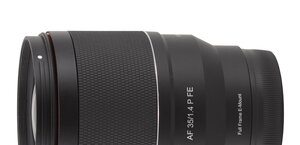Samyang AF 14 mm f/2.8 EF
5. Chromatic and spherical aberration
Chromatic aberration
Despite just one low dispersion element the tested Samyang seems devoid of any longitudinal chromatic aberration problems. Images provided below show it pretty clearly. |

Please Support UsIf you enjoy our reviews and articles, and you want us to continue our work please, support our website by donating through PayPal. The funds are going to be used for paying our editorial team, renting servers, and equipping our testing studio; only that way we will be able to continue providing you interesting content for free. |
- - - - - - - - - - - - - - - - - - - - - - - - - - - - - - - - - - - - - - - - - - - - - - - -
It’s true that the aberration increases on stopping down but it is below 0.04% everywhere so its level can be described only as very low. A round of applause for the Samyang constructors as they outdistanced their rivals quite significantly in this category.
| Canon 5D III, RAW, APS-C, f/2.8 | Canon 5D III, RAW, APS-C, f/11.0 |

|

|
Spherical aberration
First photos in this chapter don’t show any easy-to-notice ‘focus shift’ effect. Still the crops below with circles we reached before and after the focus are a bit different, it might mean the spherical aberration is not corrected in a perfect way. It seems that effect is less pronounced than in the case of the Samyang XP 14 mm f/2.4 Premium and doesn’t contribute noticeably to the worsening of image quality, like in some constructions of this type.
| Canon 5D III, f/2.8, in front of | Canon 5D III, f/2.8, behind |

|

|






